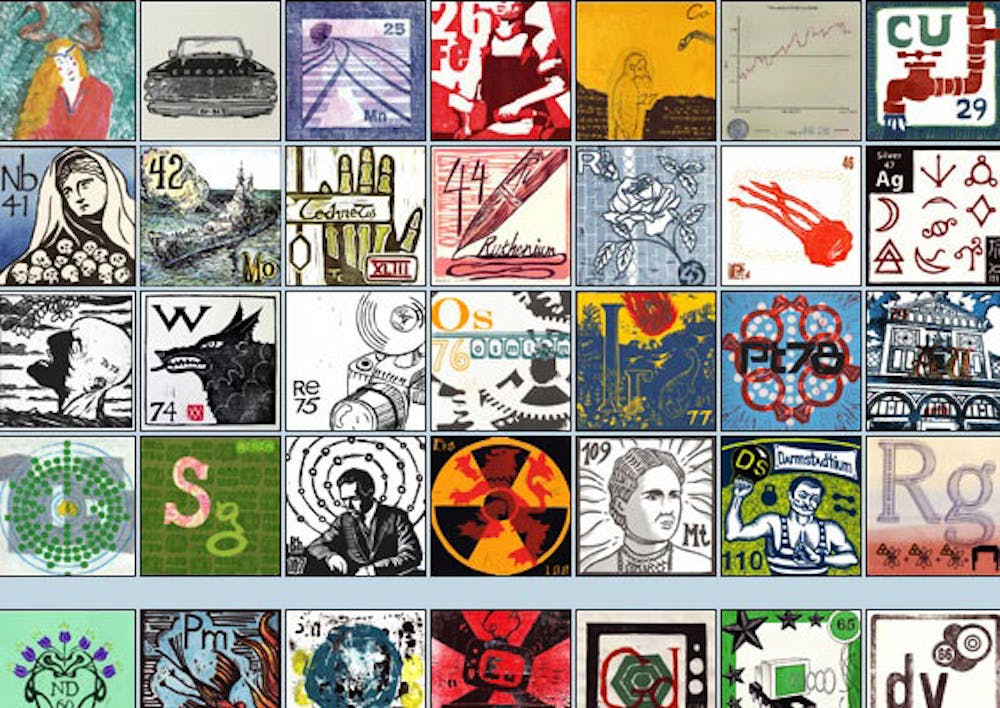There’s more chemistry between science and art than you might expect.
With twenty–first century technology, science as we know it seems to grow more and more entangled in art. Biologists and chemists work together to put molecules into motion, creating animations to capture the inner–lives of cells. Meanwhile artists use x–ray spectroscopy to further illuminate some of the behind–the–scenes work on the world’s most renowned paintings. Thus, when the Chemical Heritage Foundation brought “Elemental Matters: Artists Imagine Chemistry” to Philadelphia, our excitement was truly palpable.
Upon entering the Foundation, the line between art and science was clear–cut only in layout. White walls demarcated the back gallery from the front chemistry museum, but the art–space too was filled with periodic tables and speckled with polygons and test–tubes, as over 100 artists transformed chemistry into art and art into chemistry.
One highlight is Waterstone, 1996, where artist Dove Bradshaw orchestrates the patient dripping of water, one drop at a time, from a beaker onto a large block of limestone. Where the drops fall, one can see a slight indentation in the rock, displaying the strength of water and the painstaking process of erosion. This microcosmic piece is perhaps the most thought–provoking, as it goes beyond the scope of the human world and displays multiple chemical principles on a very relatable scale.
But the artwork does not stop in the realm of the visual; in her work Synthesizer Sound, Susan Alexander converts electromagnetic frequencies of varying elements into sensible sounds. Sadly, the soft reverberations were drowned out by the crowd enveloping the space: an interesting mixture of scientists in smart glasses and dyed–haired youth.
At the end of the day, rather than seeing many different displays of the periodic table, from (largely unimpressive) printmaking to Braille, we craved to see the omnipresent power of chemistry itself. Unfortunately, many of the pieces in the exhibit seemed somewhat limited in their scope, focusing specifically on the human experience: on the chemical composition of the human body rather than the elements at play in the larger world.
On the whole, the exhibit fell short of our expectations. Like Synthesizer Sound, it failed to make the desired impact; the force of chemistry was muffled by a presentation that left something to be coveted. Still, the bridge between art and science has been established; it just might be a while until we can effectively demonstrate the poetic quality of entropy or the elegance of the molecular machinery that makes life possible. Maybe it’s a matter of evolution.
Elemental Matters: Artists imagine chemistry Now through 12/16 Free admission Chemical Heritage Foundation 315 Chestnut St. (215) 925–2222 chemheritage.org

